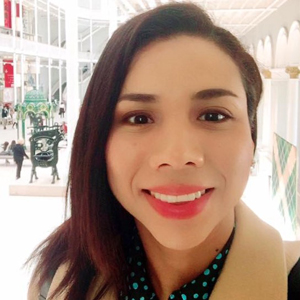Meet the modern leader

"A coach with big ears and eyes" could be a somewhat simplified description of the modern leader. Johanna Strömgren, who manages leadership training at KTH Lean Center, talks about leadership as a role in change.

Recently, the employees at KTH have been able to submit proposals for a profile for the rector's position at KTH. Being a leader was once synonymous with being allowed to stand unchallenged and giving orders. Today we have a more modern view of leadership. We want people who are responsive and supportive and can represent their team.
"In industry, and also in academia, the manager has traditionally been a specialist, it has been a career path to the managerial positions. But just because you are an expert in an area does not necessarily mean that you are a good leader. We have moved from managers who give instructions to leaders who coach their employees to commitment ", says Johanna Strömgren, director of KTH Leancentrum in Södertälje.
Johanna and her employees, among other things, hold leadership training for businesses, organizations, and the public sector. The courses mix participants from different parts of society to learn from others and obtain strategies and tools to lead with.
"The courses are very much appreciated. You can work in different businesses and come from different workplace cultures, but many of the challenges you face as a manager are the same," says Johanna.
During her 20 years as a business developer and teacher both in industry and at KTH, she has seen the need for a different leadership being born. Today, many businesses are characterized by rapid technology shifts and major changes. A manager must be able to digitize the organization and lead it in constant change. At the same time, the hierarchies are being torn down and today's managers are expected to be more supportive and coaching than before.
"The development towards a new leadership is partly related to the new requirements that companies must be able to learn and develop constantly. For that, we need committed and active employees. Then you need to lead accordingly, that is, being supportive, present and guided by distinct values."
Many companies in the IT and tech industry, for example, have been founded by people who have neither been employed nor led an organization, but have learned it over time. When traditional companies later recruit these people, they often have entirely different driving forces and expectations than what the industry is used to.
"The latest in leadership is not about a manager's qualities but a manager's behaviors. Everything starts with the leader. You have to be a good role model. Being a good leader has nothing to do with age or personal qualities, most people can learn it, although some have more aptitude for it, naturally."
Today we talk about "sustainable leadership", something that risks sounding fluffy. But it is about getting the social parts, the economic and environmental aspects connected, Johanna explains.
"For example, with their actions, the manager must show that it is important to have a good balance between work and leisure. What signals do you send if you email employees on evenings and weekends? Ethics and morals are also becoming increasingly important for employees. Many people today opt-out of jobs if they disapprove of the organization's values. And it's not even a generational issue anymore."
At her courses in Södertälje, Johanna has noticed that the biggest challenge many at management level face is to be clear about the direction and goals of the business. And the road leading to the goals is just as important. Johanna compares with the football team whose goal is to score points on the opposing team. To get there, you have rules to stick to, but at the same time, you must constantly practice how to set up the game best to be able to score goals.
"You have to practice to be good as a team, to become a learning organization that improves. It's not just about focusing on the delivery."
Many of those whom Johanna meets during the leadership courses are often too quick to come up with solutions without taking the time to get the employees on board. But there are methods and tools to lead an organization in change.
"You have to build systems and methods for capturing deviations and improvements. It is actually one part of the training in our education."
We must also not forget that leadership goes hand in hand with an" employeeship", Johanna points out:
"Leancentrum's Bengt Savén usually talks about that we, the employees, are expected to make our work contribution through delivery, improvement, and learning. The leaders' most important task is to give employees the conditions to succeed with their work contribution."
So when the President's term expires at the end of 2022, what qualities do you think are needed to lead KTH in the coming years?
"These are abilities that we teach in our courses: Ability to focus on what creates value for KTH and our stakeholders and create a structure for systematic improvements. To be clear with the direction and goals and systematically follow up on this. At the same time, the person should be humble and have confidence in the employees. Did I mention a present and coaching leadership?"
Text: Anna Gullers
What is good leadership to you?


